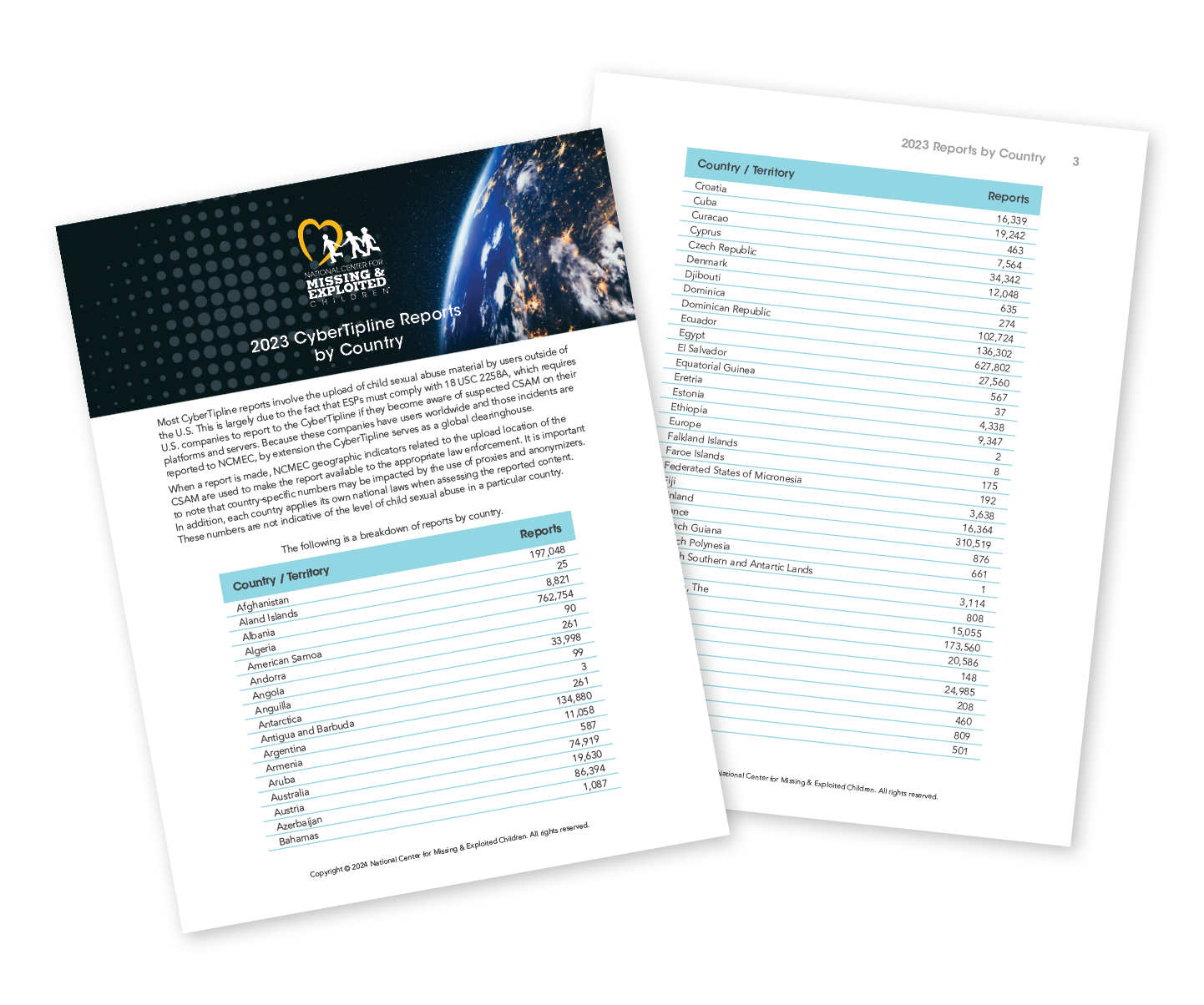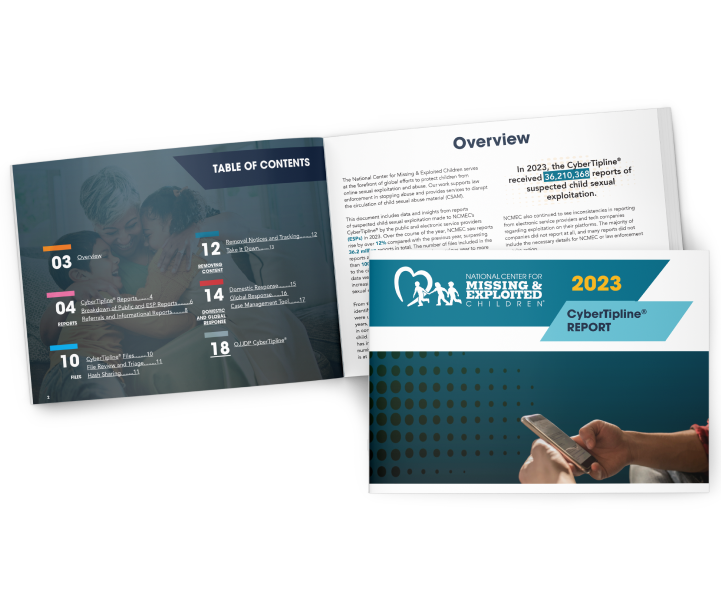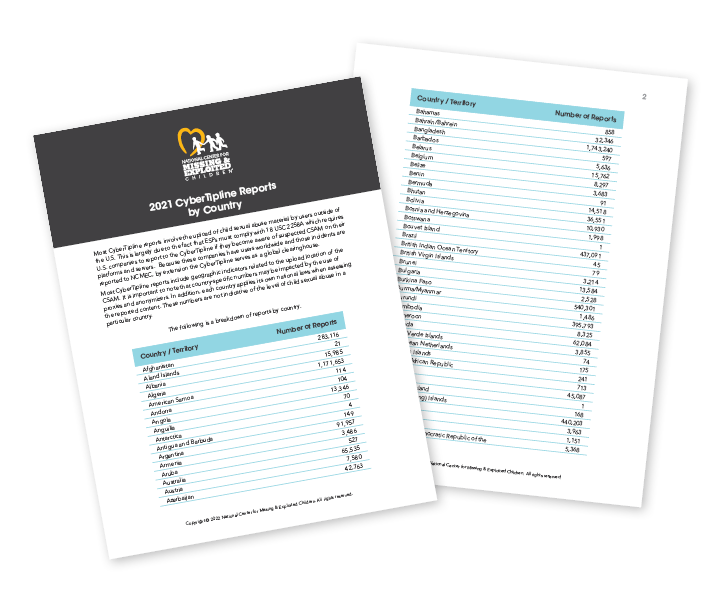The National Center for Missing & Exploited Children serves at the forefront of global efforts to protect children from online sexual exploitation and abuse. Our work supports law enforcement to stop abuse and provides services to disrupt the circulation of child sexual abuse material (CSAM).
This report includes data and insights from reports of suspected child sexual exploitation made to NCMEC's CyberTipline by the public and electronic service providers (ESPs) in 2023. Over the course of the year, NCMEC saw reports rise more than 12% compared with the previous year, surpassing 36.2 million reports in total. The number of files included in the reports also increased by 19% from the previous year to more than 100 million. The majority of reports received were related to the circulation of CSAM, but other trends indicated by the data were the continued rise in reports of financial sextortion and the use of generative AI in child sexual exploitation.
From these millions of reports, NCMEC staff were able to identify and escalate for law enforcement 63,892 reports that were urgent or involved a child in imminent danger. In recent years, NCMEC analysts have observed a dramatic escalation in content demonstrating "urgent" or "imminent" threats to a child. While the overall volume of incoming CyberTipline reports has increased by more than 20% over the past three years, the number of urgent, time-sensitive reports where a child is at risk of harm has grown by more than 140%.
NCMEC also continued to see inconsistencies in reporting from electronic service providers and tech companies regarding exploitation on their platforms. The majority of companies did not report at all, and many reports did not include the necessary details for NCMEC or law enforcement to take action.
In 2023, the CyberTipline continued to see more than 90% of reports involving the upload of CSAM by users outside the United States, fueling NCMEC's continued efforts to provide training and support to law enforcement around the world who are responding to these cases.
This report, for the first time, also lists reports on a state-by-state basis. While the majority of CyberTipline reports involve locations outside the U.S., more than 1.1 million reports were referred to law enforcement in the U.S. The agencies involved include the Internet Crimes Against Children Task Forces and other federal, state and local law enforcement.





























